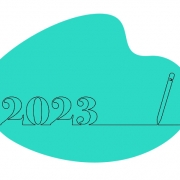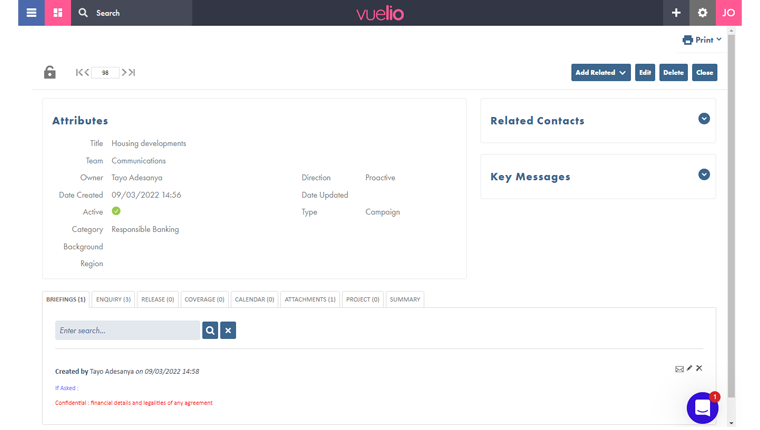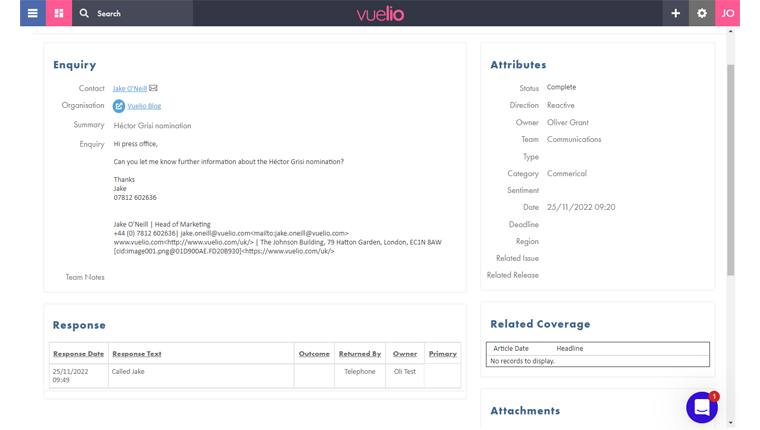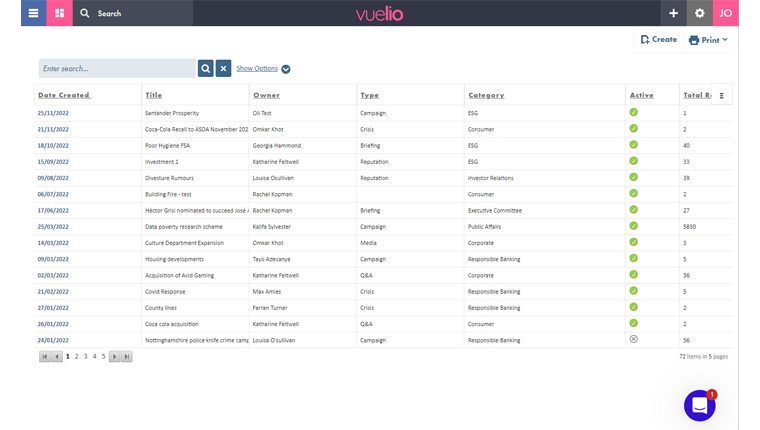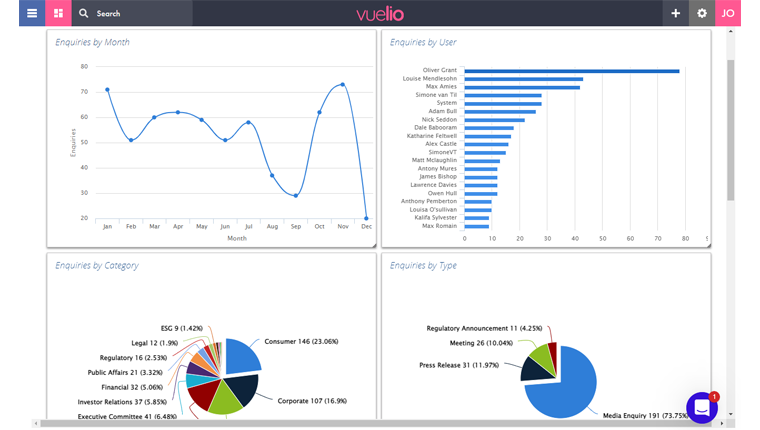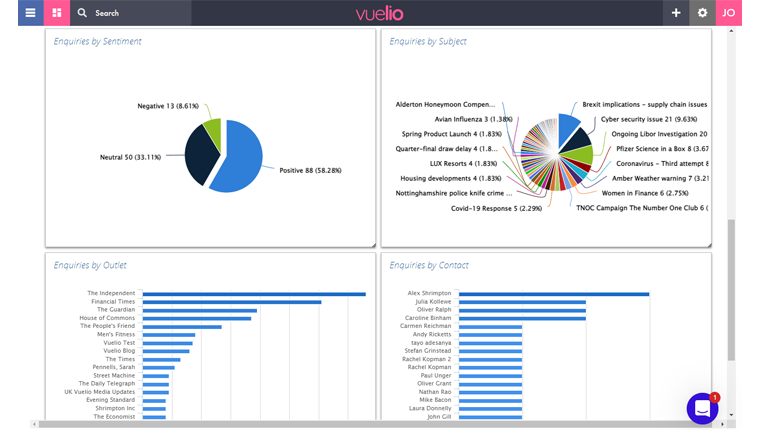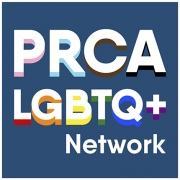Building your stakeholder strategy
Stakeholders come in many forms, from MPs, to local councillors, reporters, to experts within your industry. Also varied and potentially confusing – the relationships you and your organisation will have with each type.
With so many elements involved, a reliable stakeholder management solution can be the difference between successful campaigning and relationship-building, and a myriad of missed opportunities.
Not sure how stakeholder management can help you and your organisation? Here is a practical guide to the specific ways Vuelio Stakeholder Relationship Management can provide support, whether your niche is PR and comms, public affairs, politics, or a mix of all three.
What is a stakeholder?
“A person with influence or interest in a project, enterprise or Policy.”
A stakeholder is any group, organisation, or individual who can impact – or can be impacted – by your activity. More simply: these are people that have a stake in the execution/outcome of your project/operation.
From the position of an external comms team, stakeholders are often segmented into one of three categories:
- Political/Government stakeholders: This includes MPs, local councillors, civil servants, and Lords. Don’t forget the teams that surround political stakeholders who are key to working with them in an effective way.
- Media stakeholders: The media means the press, including newspapers, magazines, trade titles, and broadcasters. But this also increasingly includes digital media, like podcasters, TikTokers, and other social media influencers with extensive and dedicated followings.
- Industry/expert voices stakeholders: Often industry stakeholders or expert voices/academics will have the ear of political and media stakeholders, so as well as being powerful advocates for your objectives, they can be used for building relationships with other stakeholders.
To note: Although we can segment or categorise our stakeholders, they connect with each other and can be influenced by each other. This is an important factor when choosing how to engage and communicate with them individually.
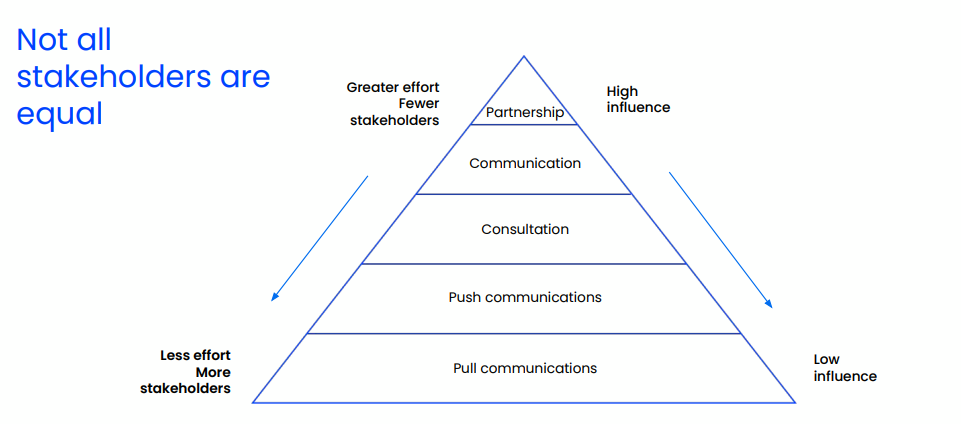
Creating your stakeholder strategy
Before thinking of engaging, it’s important to have the basics in place:
- Mapping stakeholders
- Choosing a model
- Using your model and monitoring tools to measure stakeholders
- Remember that internal relationship owners need mapping, too
Effectively mapping your stakeholders means you will have all the necessary engagement strategies in place should they react or an opportunity presents itself to build a relationship. Stakeholder management is pre-emptive discipline.
Mapping: Building a criteria
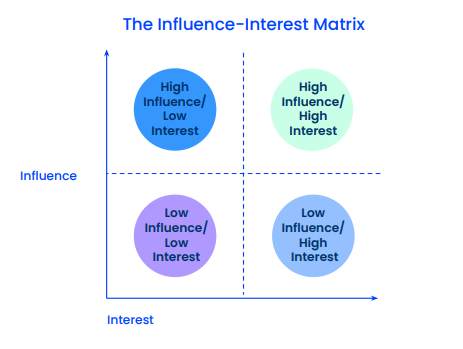 To analyse the influence and interest of your stakeholders, start by establishing a list of issues, industries, or activities to measure their interest against.
To analyse the influence and interest of your stakeholders, start by establishing a list of issues, industries, or activities to measure their interest against.
To consider:
- What industries do you operate in?
- Are you part of a supply chain to another key sector?
- What regions are you an employer in?
- Are there legislative or policy initiatives that impact you?
- Are you regulated?
- Are you a public body with a specific remit?
- Do you have a community relationship or responsibility?
- Is there a competitive concern (for example, has a competitor behaved badly that impacts your brand?)
For more on mapping, download our Vuelio guide ‘The fundamentals of stakeholder strategy’.
Consider your team
With a clearer picture of your stakeholders in relation to topics/interests, it’s time to consider what internal factors will decide how you organise your stakeholders for engagement.
- Will members of your team be responsible for a particular segment? (MPs, industry experts, the media)
- Will team members be responsible for a particular region? (for example, all stakeholder groups in the North West)
- Is there anyone working outside of your chosen SRM software responsible for key stakeholders? (for example, a chief executive responsible for direct engagement with ministers).
- Does your team have topic specialisms aligned with stakeholder interests worth leveraging?
SRM software is about removing as many steps as you can from the entire process. This ensures your team can adopt with ease and you have a full picture of your stakeholder relationships.
Stakeholder outreach: How to stand out
Stakeholders are not waiting for your call – or are they? The most important question to ask when reaching out to a stakeholder is “What is in this for them?”
A relationship requires a two-way benefit, so what kind of things can you offer? How are you helping them?
- Research and insight
- Help to deliver a remit or responsibilities
- Deliver a social value you can connect through
- Align behind a shared challenge
‘We have a crisis’ – How do you make your stakeholders listen?
It might sound obvious, but engaging with stakeholders before you are in crisis will make a big difference when things happen outside of your control.
- You will have built credibility with them.
- Established communication pathways that work for both parties.
- Have relationship owners that can facilitate difficult conversations.
Crisis mythbusting: With a noisy multichannel world, your stakeholders may hear things that you need to correct relating to your operation. This is the “new normal” and not to be mistaken as crisis comms. All year round a strong stakeholder strategy will ensure you can communicate with agility and accuracy without setting up a crisis war room or needing vast internal discussion or sign off.
Dealing with the unknown
The unknown is more expected than the known when it comes to external stakeholders. Your stakeholder map should constantly be evolving with:
- Changes in government policy, bringing new stakeholders into play or removing ones who no longer have interest or influence
- Topical media interest, a new editorial focus, or influential voice that opens up a need to develop media relationships around a specific focus
- Campaigners and industry voices changing the dial, through research and campaign activities, interest in you or your need to comment can rise and change
- Global events with national interpretation – the domino effect can distract our stakeholders from giving us attention, their interest may drop and we may need to rethink where our efforts are spent
Checklist for your stakeholder strategy
- Map your stakeholders: Mapping your stakeholders with a model will help you communicate the need of external stakeholders internally and enable you to design appropriate communications pathways relevant to their interest and influence.
- Empower your team: Institute an internal ‘playbook’ setting out a simplified approach to managing your stakeholders, including segment definitions, and explain why stakeholder management is necessary.
- Build sensible lines to take: Stakeholder management can be time intensive. Consistency matters more than complexity. Your playbook should teach relationship owners the power of regular engagement before an issue arises.
- Align your playbook with SRM software: Need to add some more in here
- Plan for potential crises ahead: The unknown is the new normal, ‘War Gaming’ crisis planning should include a review of your stakeholder communications strategy.
- Encourage quarterly reviews with internal relationship owners: How are we doing? Are we maximising relationship building opportunities? SRM reporting tools can help analysis progress with ease.
- Double-check your data compliance and security: Storing crucial information on external relationships must meet compliance requirements . Ensure the methods or platform you use is ISO-accredited and GDPR-compliant.
Remember that stakeholder management is a long-term permanent endeavour that should evolve and grow with your strategic objectives, whatever they may be.
The earlier you begin, the more in control you’ll be.
How can Vuelio help?
- SRM platform with fully integrated monitoring and data, ensuring your team are fully mobilised to manage stakeholder relationships effectively.
- Single point of truth for relationship health, whether at organisation level or campaign/issue level. Inform senior decision making at a click of a button.
- Empower relationship owners – Vuelio SRM was created with the simple objective of starting with the end in mind, bespoke set ups ensure we match your team’s workflow and support easy adoption.
- Be ready for anything – in a world where the unknown is the new known, Vuelio SRM ensures you are ready to mobilise and learn in real time.
Download the full version of this guide ‘The fundamentals of stakeholder strategy‘ and find out more about Vuelio’s Stakeholder Relationship Management (SRM) tools here.








